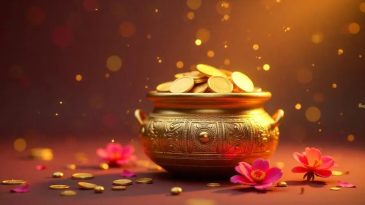- General
- Updated on October 23, 2025
Regional Sweets of India: What Every Festival Brings to the Table
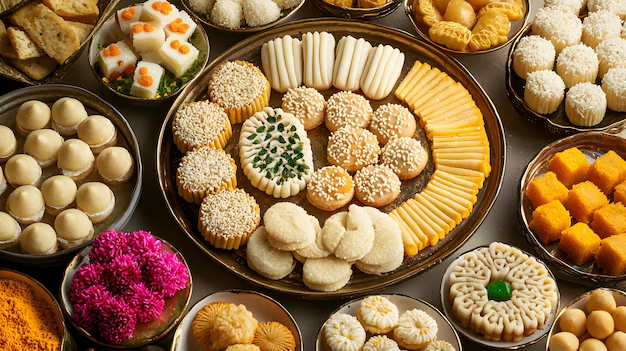
India is a land of festivals, colours, and traditions — and at the heart of every celebration lies something irresistible: sweets. No Indian festival is truly complete without a spread of regional desserts that bring together families, cultures, and communities. Each sweet has a story, a heritage, and a flavour that connects generations. From Bengal’s syrup-soaked Rasgulla to Tamil Nadu’s melt-in-mouth Mysore Pak, Indian sweets are a delicious way to celebrate the diversity of the country.
In this guide, we’ll explore how different regions of India celebrate festivals through their signature sweets, and why these delicacies are so much more than just food.
The Cultural Importance of Sweets in Indian Festivals
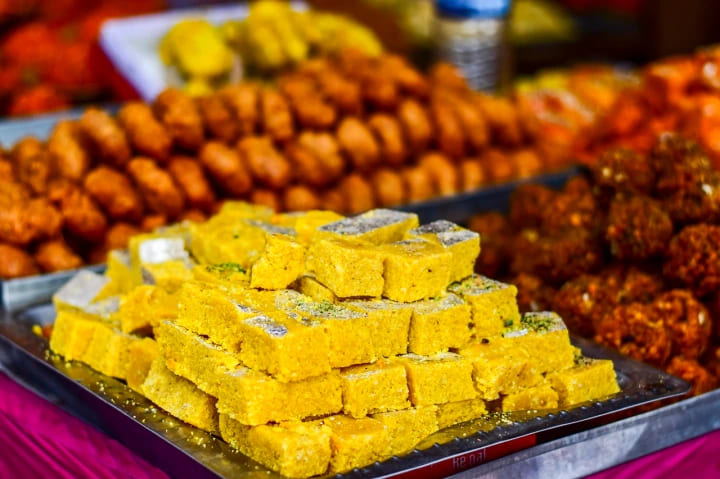
Sweets, or mithai, hold a sacred place in Indian traditions. They symbolize purity, happiness, and prosperity. Whether offered to deities or shared with loved ones, sweets express goodwill and blessings.
In India, every major festival has a special sweet that marks its essence. For example, during Diwali, homes glow with the aroma of laddoos and barfis; during Eid, vermicelli kheer or sheer khurma is a must; while Pongal in Tamil Nadu brings the comforting sweetness of sakkarai pongal.
Sweets not only satisfy cravings but also tell the story of India’s history, climate, and local ingredients — from jaggery and coconut in the South to milk and ghee in the North.
North India: The Land of Rich and Ghee-Laden Delights
North Indian sweets are known for their richness, often made with khoya, ghee, and milk. They are indulgent, festive, and deeply connected to celebrations.
Laddoos and Barfis for Diwali
Diwali, the festival of lights, is incomplete without besan laddoo, motichoor laddoo, and kaju barfi. These sweets are made in large batches, shared with neighbours, and offered to Goddess Lakshmi as symbols of abundance.
Gujiya for Holi
In Uttar Pradesh and Bihar, gujiya — a crispy pastry filled with khoya, nuts, and coconut — is the star of Holi. It represents sweetness in relationships and the joy of sharing during the festival of colours.
Panjiri and Peda for Janmashtami
When it’s time to celebrate Lord Krishna’s birth, devotees prepare makhan mishri, peda, and panjiri — sweets made with ghee, wheat, and sugar, believed to be Krishna’s favourites.
North India’s sweets are not just festive treats but cultural icons that mark every joyous occasion.
East India: Syrupy, Soft, and Soulful Creations
Eastern India is known for its mastery in milk-based sweets, especially in states like West Bengal, Odisha, and Assam. The texture, aroma, and sweetness of these desserts are unmatched.
Rasgulla and Sandesh for Durga Puja
Bengal’s rasgulla and sandesh are legends in their own right. These sweets are light, spongy, and soaked in syrup — perfect for celebrating Durga Puja, the region’s grandest festival. Sandesh, made from fresh chhena and sugar, is often moulded into artistic shapes to please both the eyes and taste buds.
Chhena Poda for Raja Parba
Odisha’s signature sweet, chhena poda (meaning roasted cheese), is baked to perfection and offered during Raja Parba, a festival celebrating womanhood and fertility. Its caramelized crust and soft interior make it a delight for festive occasions.
Pitha for Bihu
In Assam, pitha — a rice flour cake stuffed with coconut and jaggery — is made during Bihu to mark the harvest season. It represents gratitude towards nature and the spirit of sharing.
Eastern sweets carry a delicate sweetness that reflects the region’s devotion to craftsmanship and detail.
South India: Coconut, Jaggery, and Ancient Traditions
Southern India’s sweets are known for their simplicity, natural ingredients, and strong connection to religious rituals. Coconut, rice, jaggery, and cardamom often take centre stage.
Sakkarai Pongal for Pongal Festival
During the harvest festival of Pongal, South Indians prepare sakkarai pongal — a dish made from rice, lentils, jaggery, and ghee, offered to the Sun God. Its golden hue and rich aroma symbolize prosperity and gratitude.
Mysore Pak for Diwali
Originating from Karnataka, Mysore Pak is a ghee-rich sweet made from gram flour and sugar. It’s believed to have been created in the royal kitchens of Mysore and remains a Diwali favourite.
Payasam for Onam and Vishu
Kerala’s payasam, a rice pudding made with coconut milk, jaggery, and cardamom, is a must for Onam. It’s often served on banana leaves as part of the grand Onam Sadhya feast, symbolizing joy and togetherness.
Southern sweets perfectly balance flavour and tradition, with recipes that have been passed down through generations.
West India: Colourful Flavours and Royal Heritage
The western states of Maharashtra, Gujarat, and Rajasthan bring their own distinct flavours to India’s sweet story. These regions celebrate festivals with vibrant and often dry sweets, making them perfect for gifting and storage.
Modak for Ganesh Chaturthi
In Maharashtra, modak — a steamed or fried dumpling filled with jaggery and coconut — is offered to Lord Ganesha. It’s said to be his favourite sweet and symbolizes happiness and spiritual knowledge.
Shrikhand for Janmashtami
Gujarat and Maharashtra share a love for shrikhand, a creamy yogurt-based dessert flavoured with saffron and cardamom. It’s light yet indulgent and often served during Janmashtami celebrations.
Ghewar for Teej and Raksha Bandhan
Rajasthan’s ghewar, a honeycomb-like sweet soaked in sugar syrup, is traditionally prepared for Teej and Raksha Bandhan. Its golden colour and festive appeal make it a visual and culinary delight.
Western sweets combine royal tastes, artistic presentation, and festive spirit in every bite.
The Modern Twist: Fusion and Health-Conscious Sweets
As India modernizes, so do its festive sweets. Today, traditional recipes are being reimagined with healthier ingredients like jaggery, millet, almond flour, and coconut sugar. Fusion sweets such as chocolate barfi, matcha laddoo, and rose-flavoured rasgulla are gaining popularity in urban homes and boutique mithai shops.
Health-conscious consumers are also opting for baked, sugar-free, or vegan versions of their favourite festival treats — proving that tradition and wellness can coexist beautifully.
Read Also : Top Navratri Fasting Recipes You Must Try
Conclusion: A Sweet Symphony of Cultures and Celebrations
From North to South, East to West, every Indian sweet tells a story — of love, devotion, and celebration. They are not just desserts but emotional connections passed down through generations, shared during moments of joy and togetherness.
So, the next time you savour a laddoo, rasgulla, or modak, remember — you’re not just tasting sugar and ghee, but centuries of tradition, art, and celebration that make India truly unique.
Each festival may differ, but the one thing that unites them all is the sweetness that brings people closer — and that’s what makes India’s festive desserts truly timeless.
Join the discussion
Related Articles
No results available
ResetTrending Articles

- General
- Updated on October 23, 2025


- General
- Updated on October 22, 2025
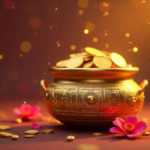

- General
- Updated on October 18, 2025


- General
- Updated on October 17, 2025


- General
- Updated on October 15, 2025


- General
- Updated on October 15, 2025
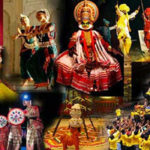

- General
- Updated on October 9, 2025


- Fashion
- Updated on October 7, 2025

- General
- Updated on October 4, 2025


- General
- Updated on October 3, 2025
No results available
Reset

